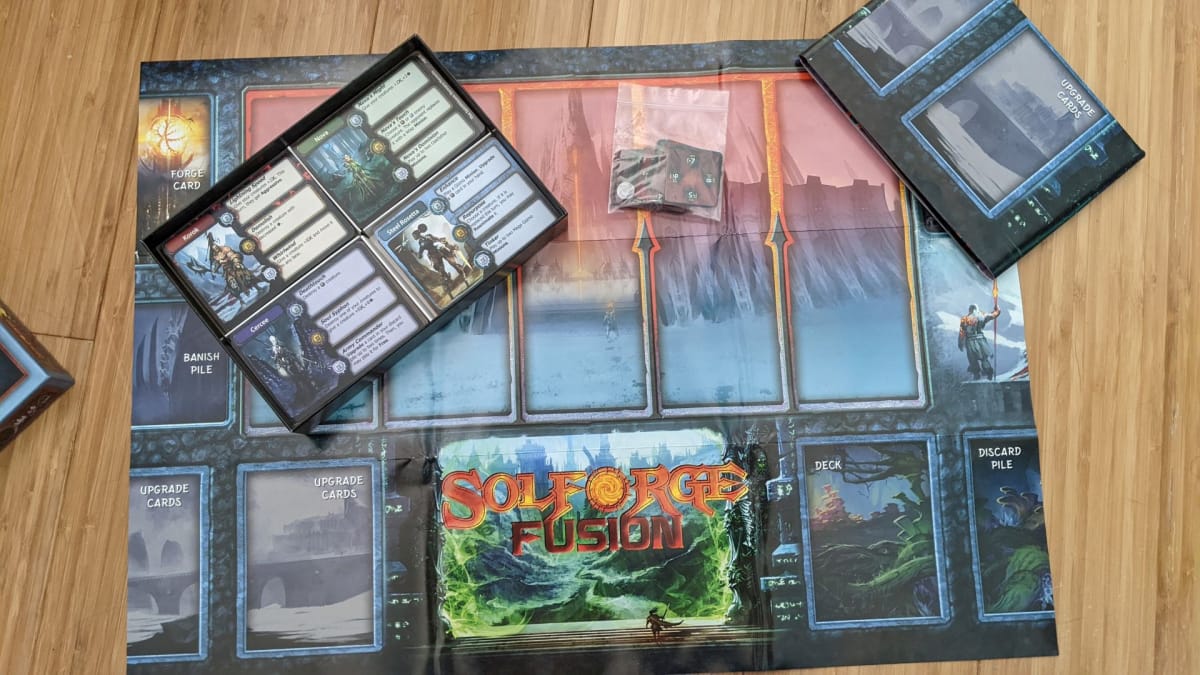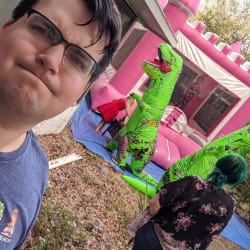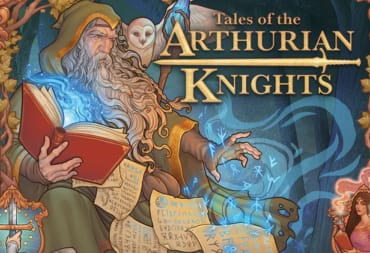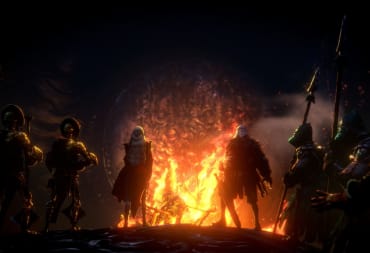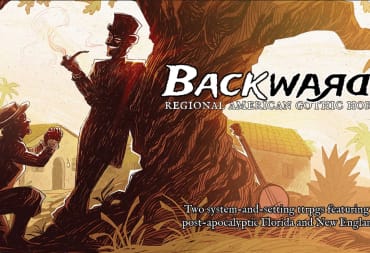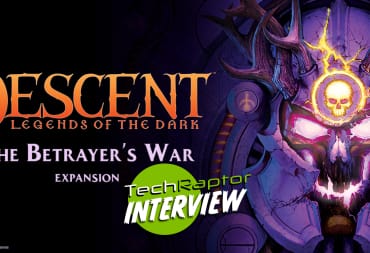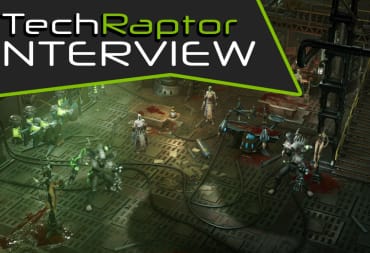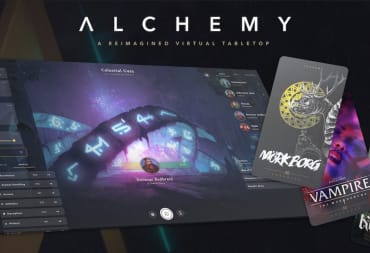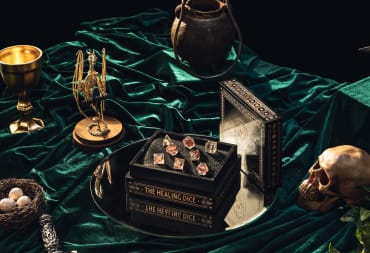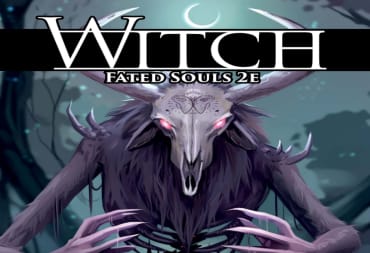SolForge Fusion, an upcoming hybrid deck game from the minds of Richard Garfield and Justin Gary, is just days from hitting store shelves. This new project is not just the kick-off of a new game for fans of the genre to get their hands on but also pioneers some exciting technology behind the machine creation of cards and a new way to engage in tournament play and a game's narrative.
Last month we were lucky enough to sit down with Garfield and Gary to talk about SolForge Fusion, its creation, and its roadmap.
SolForge Fusion began as a Kickstarted project in September of 2021 and managed to get fully funded in just 26 minutes. This new evolution of the digital CCG SolForge from Stone Blade Entertainment would bring the digital game to the physical world.
Designed by Magic The Gathering creator Richard Garfield and Ascension Deckbuilding Game creator Justin Gary, SolForge Fusion promised not just a physical card game with algorithmically generated cards for unique deck design, but also an in-depth Organized Play plan where fans could shape the world through participating in Tournaments. If you're interested in learning more about some unique mechanics behind the game and how it plays, then be sure to check out our review of SolForge Fusion.
What makes SolForge Fusion unique?
SolForge Fusion is a digitally printed card game, Garfield explains that that means "[they] can actually make each deck unique and SolForge has also taken steps to make the cards mostly unique." Garfield felt that there was a certain level of magic lost from games where the decks are entirely constructed. Everyone has access to the same tools, but you need to work to get those cards which can not only take time but money.
With SolForge Fusion offering unique decks for every player Garfield noted that it brings the experience closer to "what people had at the start of their experience with these massively modular games." As the minimum unit you can purchase is a deck, and not a single card, it alters how unique and flexible what is inside that deck can be. This is further enhanced as no two decks are ever alike due to the differences of cards in the deck.
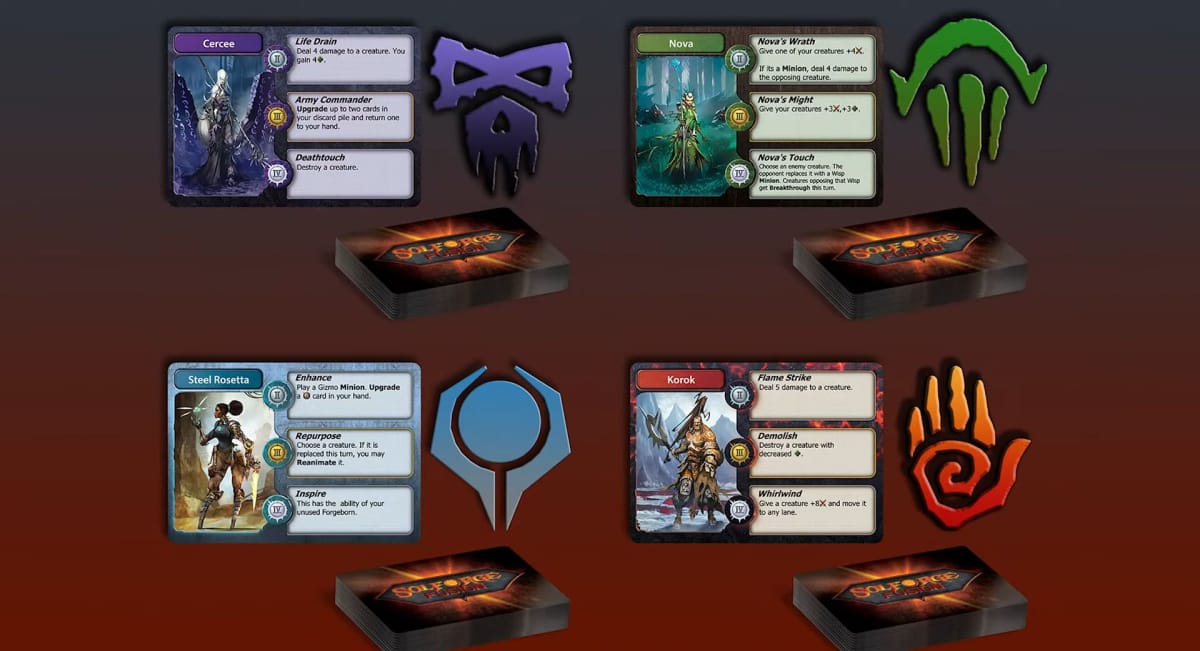
The bigger aspect of SolForge Fusion comes from the two half-decks that you put together. "In KeyForge you just had the single random deck, but in SolForge with the half-decks you still have the agency of picking which two halfs you want to put together." Doing this Garfield hopes players will be able to create unique strategies that you might not have been able to capitalize on without those two half-decks being put together.
Every Half-Deck you obtain has a Forgeborn and ten different cards (each with three versions that upgrade through play). This deck will have its own unique name identifier, and a list of cards included in that deck on the back. The digital creation of the game and cards allows for these decks to be stored digitally and to be tracked.
In Set 1 of SolForge Fusion Gary explained that the machine printing and ability to create cards through combined naming conventions it has allowed for 15,000 different permutations of cards where two cards might share certain aspects but will not be entire copies. With each new content pack this number will grow exponentially as different returning conventions are met with new ones. Even after printing so many Starter Kits there are still plenty of possible permutations that have yet to be seen.
Gary reminisced on his early time playing Magic the Gathering when there wasn't the internet or spoilers for cards and every pack he opened, or card his opponent played he was encountering new cards. He wants to recreate that feeling with SolForge Fusion where you could be experiencing new cards for months and having to always be creating new strategies to defeat them.
This uniqueness in a game deck also doesn't just stop at the experience of opening a new deck, or the manufacturing of new cards, but will even be ever-changing every time you play. As you play a card in SolForge Fusion it is automatically upgraded with another from your upgrade deck that will then be reshuffled into the main deck for the next phase.
You could be playing the same two half-decks and every time you do based on what has upgraded the deck itself will grow to be unique by the end of your game. Garfield elaborated further that seeing the massively modular deck games gives people a feeling that you need that much modularity when in practice you really don't, especially as a meta forms and certain cards or structures float to the top.
Every faction has a theme and certain mechanics that they'll lean heavily into. With SolForge Fusion being specifically built around the idea of creating two differently colored half-decks that cohesion also needed to be made between the different colors. You can't just have Red go all out attacking and your blue or green half work independently, but "[they] had to design cohesive ways for them to combine together."
The Dinosaurs of the Red faction might deal extra damage to themselves for benefits, but then the Blue faction has spells that can also deal that damage to trigger it, but the Green faction can heal up your units. So whether you want to use Red and Blue and have Blue be an engine to trigger Red dinosaur abilities, or have Red and Green and have Green sustain the Red Dinosaurs as they're taking damage new strategies are constantly being created.
What goes into making a SolForge Fusion Card?
To describe the way that cards are created Gary explains they're built mostly on an Adjective-Noun system so two cards with the same name will be the same, Forgeborn not included. "If there's Firebreathing Dragon and Frost Yeti, there could also be a Frost Dragon and a Firebreathing Yeti." The trait "Firebreathing" will mean one thing, while "Yeti" will insituate something completely different.
It's in this way that even as players come up against cards that they've never interacted with before if they understand the building block mechanics of what that creature is based upon then they can understand what abilities that card might have. This is steps that have been taken to make sure the game is understandable "I don't want to read every one of your cards every time it's played."
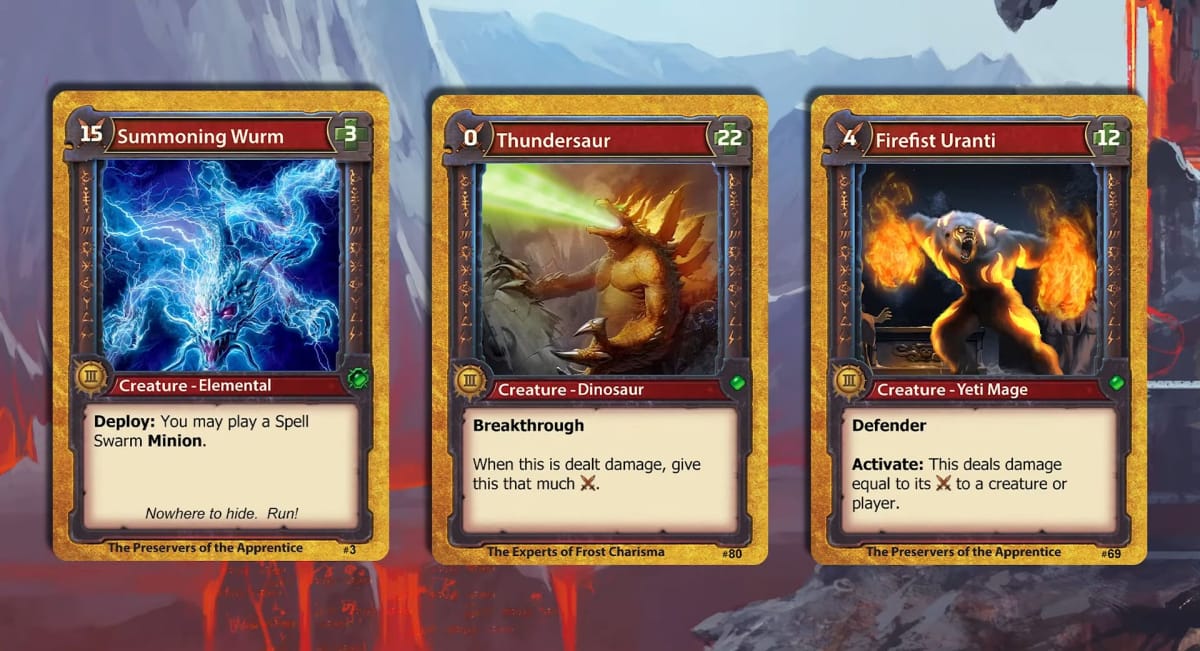
There was a pretty clear understanding that two cards that were both Yeti but one was more powerful than the other would immediately cause imbalance and with it a lack of fun so it was important that all cards remain unique and interesting, but that balance was important above all.
There are also some cards that don't fall into the Adjective-Noun name, these ones are more finely crafted. These don't just grow stronger but there's a story told throughout their evolution. The example given here is a card that at Level 1 is a dragon egg with no attack and six health, that at Level 2 is now a baby, and then can be unleashed as a terrifying force at Level 3. Knowing that they have the three levels of evolution to power up cards they knew that they wanted to not just show the same being get stronger, but also tell a story.
How does a game this complicated stay balanced?
When asked how SolForge maintained a level of balance, Gary revealed that they've been fine-tuning the balance of SolForge Fusion for over three years at this point. Using the core SolForge to work from the idea was "certainly ambitious enough that it took a lot of convincing from Justin [Gary]" for Garfield to want to be involved. Gary had proposed using a system for the digital SolForge that had been specifically designed to not be something possible to do as a physical product, and use it to say "ahh, well let's make it paper."
So much of SolForge Fusion needed to be built from the ground up because there is nothing established for what they're doing. Systems needed to be created to monitor for synergies, so that there's "never a deck with a Zombie Lord but no Zombies to work with," the system also needed to sort for where power creatures were out of line so that they could be adjusted for. Whether the synergies were too weak, or far too strong, this is used to create each of these unique decks.
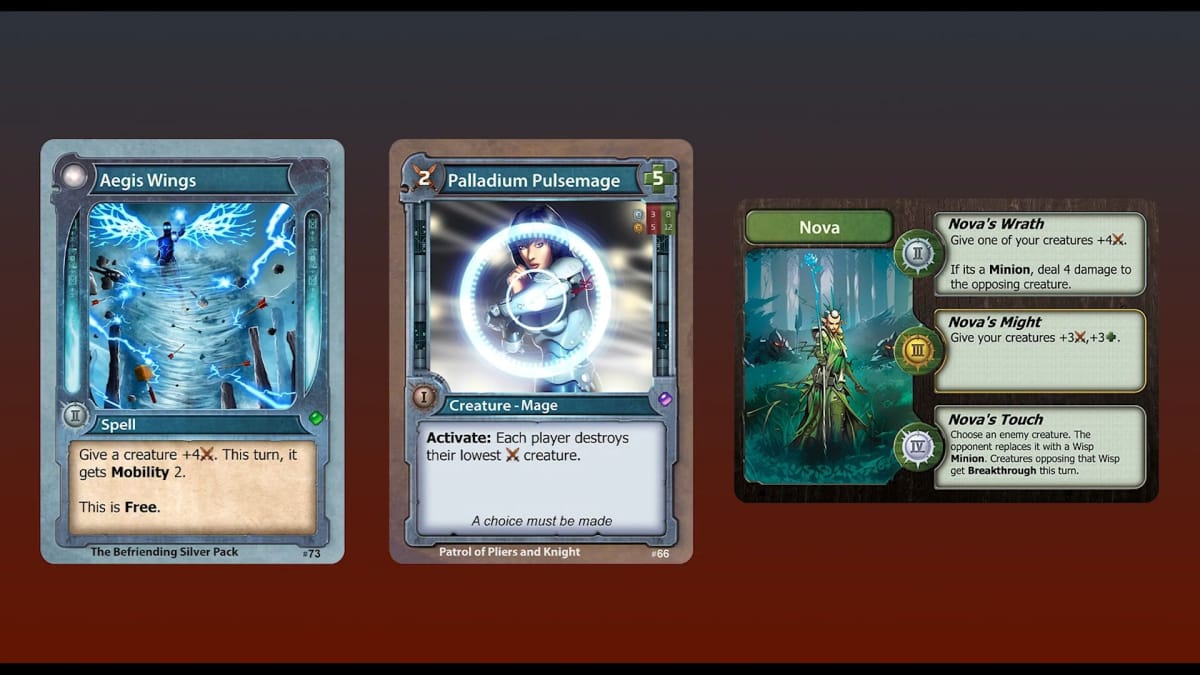
Talking about broken combinations Gary recounted a situation where synergy was found that two characters could feed off one another's abilities and ramp up their attacks allowing you to deal 40+ damage in a single turn. Gary commented for anyone working on creating games chances are exponential referencing is likely going to be a good source of broken abilities. What's most exciting is the hooks for combos but Garfield lamented that with so many hooks for combos or too powerful combos it's also dangerous to the balance of the game.
What is the SolForge Fusion Lore?
The world of SolForge tells the story of the planet Solis which has suffered an endless ice age. The monolithic tower known as the SolForge, with its Arcane Sun shining vibrantly, feeds arcane energy into the world. Though many perished those that were able to use these arcane energies were able to alter themselves to adapt, these being become the four factions that are represented by the different colors of the game.
Those who survive a pilgrimage to the SolForge are transformed entirely, these beings become known as the Forgeborn and serve as champions of their factions. While there's only so much written of the SolForge Fusion story Gary did comment that there was a lot of time spent not only on what the lore was for the current world but also "a lot of plans for how people will encounter it."
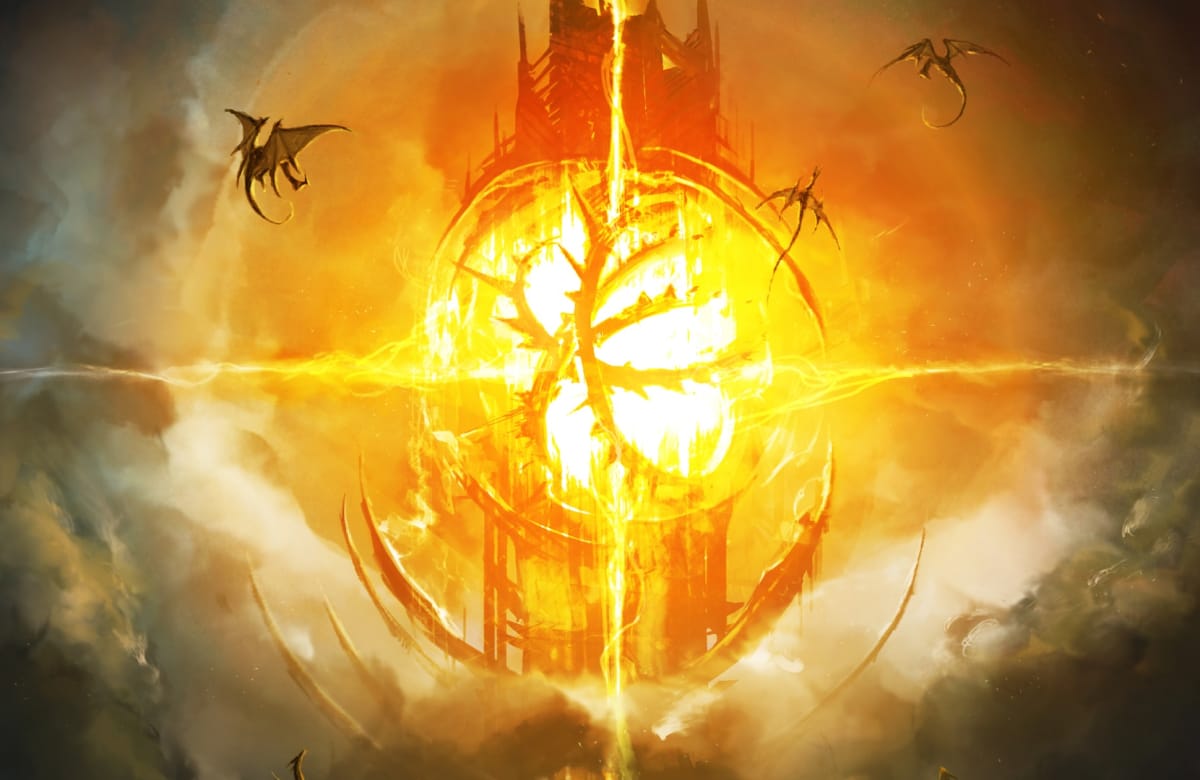
The story, available on the official SolForge Fusion website, can be where players can not only get caught up but be aware of the next part of each story as it develops through set releases and Organized Play. Gary explained there is a Gen Con Storyline Tournament 2022 Story update "where players were able to influence the story in the future" and that there will be another chance for players to update the story at the upcoming PAX Unplugged. Expanding further on the Gen Con Storyline Gary explained that there were a few things that influenced the outcome of the story.
One way that the plot was guided was the total performance of the Forgeborn faction over the tournament, "even if you were at the last table you could still influence it by winning your last round," within the factions the Forgeborn that won the tournament overall determined which was the true victor, and "we also had our loremaster, George Rockwell, going around from table to table during the tournament and capturing stories from the event. So cool gameplay moments that happened, unique little tales, and those things are going to be told out as stories that are going to be released."
Garfield added that the capture of these individual moments helps elevate SolForge Fusion's past simply being a "choose your own adventure, which these kinds of things normally are." Those stories will remain attached to the player and their individual deck to contribute to the overall narrative. Over the next year, there are more ways in which Garfield and Gary plan to reveal how players can take a further part in the development of the world.
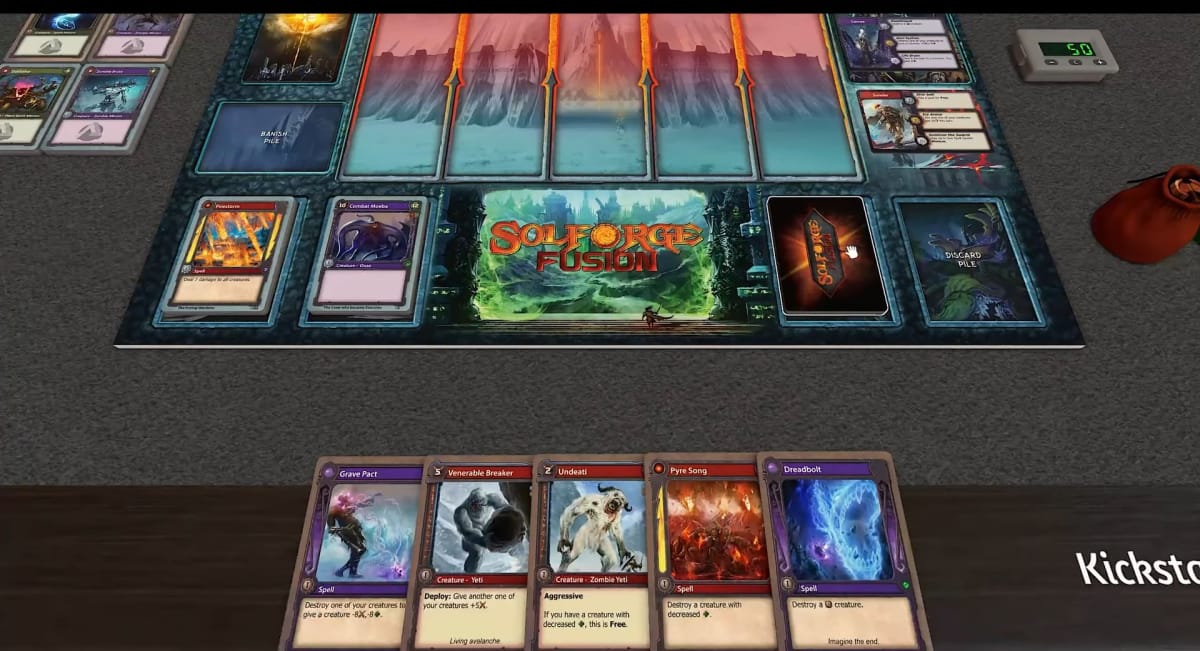
"We have about three years of branching story arcs" that will all be determined based on factors from these tournaments. Gary listed off that these changes won't just influence the story on the website but also "through the way the cards evolve including things like rare flavor text drops that appear in your packs [...] and which factions get certain cards and how cards evolve over time."
Accompanying plans for lore to be available through the cards themselves there's also other media that Gary and Garfield hope to use to get the story out to the fans. There will be animated shorts focusing on the Forgeborn as "[they] spent a lot of time building out these Forgeborn characters, which everybody plays as in the game, and we want players to be able to attach to them." Gary puts a lot of their ability to craft this story and facilitates so much lore constantly in flux on how they're a digitally printed game which gives them more opportunity to do interesting things.
Organized Play
The back of each Forgeborn card will not just contain a decklist but also a QR code that will take you to where you can register your unique deck with your SolForge Fusion account. Through this ", only one person can have that deck associated with their account." For online play, there's a Tabletop Simulator mod that is free so that you can not only get started and play with a few free test decks but by logging into your SolForge Fusion account can access all of your available decks. Gary spoke about the active Stone Blade Entertainment discord where players are already getting involved and playing online.
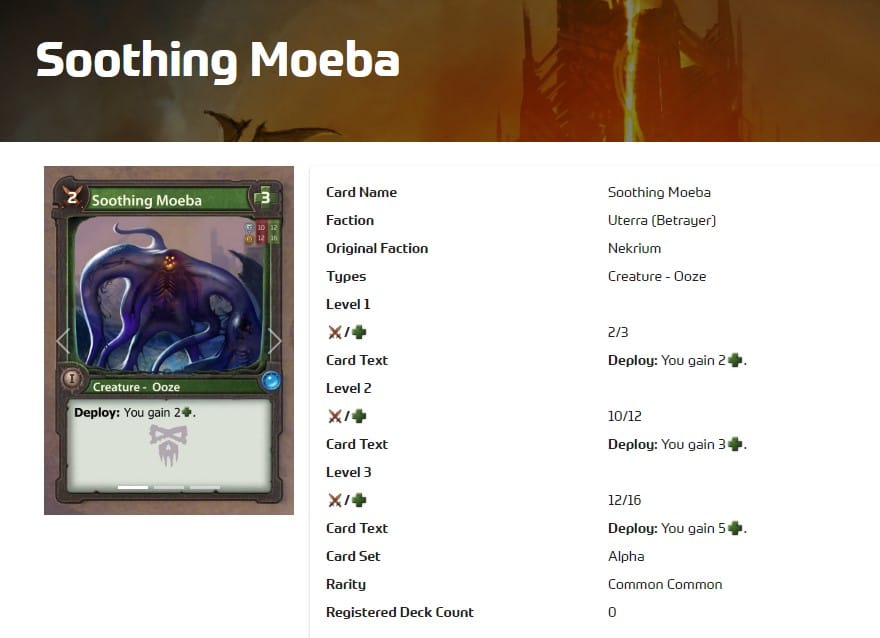
Supporting not only hobby and game store play but also online play having each deck be trackable via QR code and through your SolForge account means that no matter where you are or who you're playing against those statistics are able to come with you. Tournament Software is available for those gaming stores that will facilitate easy ranking and tracking of ranks for players interested in pursuing competitive play. "The higher that your deck ranks the higher tier events it can qualify you for" and it's in the way that from generation the deck is unique to you that allows SolForge to have such an in-depth way of tracking and involving the player.
As your deck is tracked this also facilitates the idea of having a home store that you represent online, with the possibility of everyone at your store winning prizes related to the game, and that with supported software facilitates not just a one-day tournament, but a season of games where you're constantly working on your deck ranking not just at a local but a global scale.
SolForge Fusion is releasing on October 27th, if you're interested in purchasing the game you can from your local game store or from the SolForge website. If you want to get into the game right now then you can check it out via Tabletop Simulator. You can also check out SolForge Fusion on Twitter where they're routinely showing off a variety of cards and detail events, or Justin Gary on Twitter
TechRaptor would like to thank Richard Garfield and Justin Gary for taking the time to talk with us about SolForge Fusion
Have a tip, or want to point out something we missed? Leave a Comment or e-mail us at tips@techraptor.net
